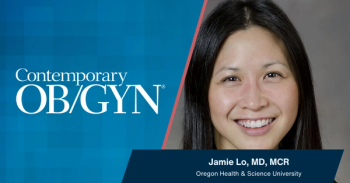
Editorial: Progesterone: No magic bullet
I must admit I was very skeptical when I first heard that the NICHD Maternal-Fetal Medicine Units Network was going to conduct a randomized clinical trial of 17-hydroxyprogesterone caproate for the prevention of prematurity. . .
Does 17P reduce the risk of preterm delivery?
Thus, I was stunned in 2003 by the publication of two trials suggesting that progesterone significantly reduced the threat of PTD in high-risk patients. Meis and associates from the MFM Network recruited 463 patients with a history of spontaneous PTD and randomized them in a 2:1 ratio to receive intramuscular injection of 250 mg of 17P versus placebo from 16 to 20 weeks until 36 weeks.3 Treatment with 17P significantly reduced the risk of delivery prior to 37 weeks compared with patients receiving placebo, 36.3% versus 54.9%, respectively (RR 0.66; 95% CI, 0.54–0.81). Similarly, 17P reduced the recurrence risk of premature birth prior to 35 weeks, 20.6% versus 30.7% (RR 0.67; 95% CI, 0.48–0.93), and prior to 32 weeks, 11.4% versus 19.6% (RR 0.58; 95% CI, 0.37–0.91). Moreover, infants of patients in the 17P group had less necrotizing enterocolitis, intraventricular hemorrhage, and need for supplemental oxygen. The only caveat to these unexpected findings was that the rates of preterm birth in the placebo group appeared higher than would commonly be expected albeit in a very high-risk cohort.
TO BE SURE, there were older studies that had found similar beneficial effects from progesterone supplementation. One of the earliest trials, reported in the New England Journal of Medicine in 1975, compared 17P with placebo in 43 high-risk patients.5 The authors randomized women with a history of two spontaneous abortions, one premature delivery plus one spontaneous abortion, or two or more premature deliveries to receive 250 mg of 17P IM once a week versus placebo. The authors found a protective effect of 17P, with a significantly longer mean duration of pregnancy, higher mean birthweight, and lower perinatal mortality rate. In 1985, Yemini and associates duplicated these findings in a randomized controlled trial of 17P in 80 similarly defined high-risk women.6
Although the 2003 reports were encouraging, there were and remain obvious, critical, unanswered questions regarding treatment in patients who do not necessarily have a history of preterm birth. For example, does 17P have any effect during or following an episode of preterm labor in a patient without prior risk factors? Is it useful in a patient with a positive fetal fibronectin? Will it reduce the risk of preterm birth in multiple gestations? If we know that patients with a shortened cervical length are at increased risk of preterm birth, will 17P reduce that risk? For the latter two questions, we may have some answers, but those answers are contradictory.
Newsletter
Get the latest clinical updates, case studies, and expert commentary in obstetric and gynecologic care. Sign up now to stay informed.











